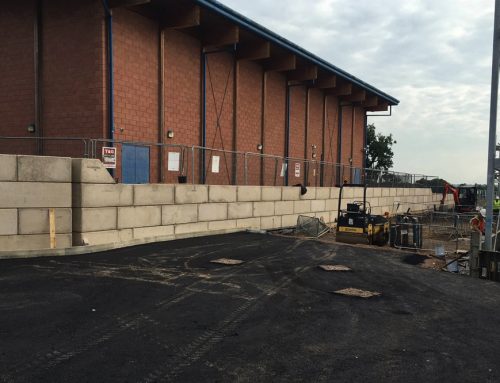We have spoken in the past about the differences between Traditional Concrete and Recycled Concrete, and the significant role Recycled Concrete can play in not only reducing Carbon Emissions, but creating a sustainable, greener alternative to more traditional methods of Concrete manufacture. In this blog we’ll take a look at just what Precast Concrete is, how it’s formed and where it came from.
History
Although there are examples of roman use of Precast Concrete for the manufacture of aqueducts and culverts, in the modern world the Precast process was used first by a gentleman in Liverpool called John Brodie. Brodie was a creative genius and also invented the football goal net too.
In the early 1900’s Brodie was at the forefront of introducing the pre-fabricated housing technology to the UK as a cost effective solution to building property.
Many examples of this type of building can still be seen all over the UK to this very day. Brodie was also the engineer behind the Mersey Tunnel too which was completed in 1934. At the time of its construction it was longest underwater road tunnel, a title held for over 20 years.
There are many amazing examples of structures built from Precast Concrete, The Pantheon Theatre, Rome, and the Sydney Opera House, Australia being two of the most famous examples.
Precast Concrete
In essence, Precast Concrete is produced by pouring Concrete into mold or forms which are then allowed to cure in a controlled environment before being transported to its final destination.
There are literally hundreds of different uses for Precast Concrete from panels in buildings to Concrete blocks and different products can be used in a wide range of projects and forms. In New South Wales, the local government made extensive use of Precast Concrete in their stations. There were over 145 stations built using this form of Concrete manufacture
There are also lots of different possibilities in terms of the aesthetics of Precast Concrete too, from look and finish to colour by introducing Colour pigments to the mix.
Advantages to Precasting
There are numerous advantages of using Precast Concrete which we have touched upon briefly already. The main advantage being that the Concrete is being manufactured in a controlled environment where it is easier to mix and cure the concrete.
This alone gives massive advantages when it comes to monitoring quality more closely. Labour can also be reduced and that labour can also be less skilled because of the process required. Once on site, Precast products can be installed immediately, so there is no waiting time for the products to cure. Finally, with the curing of the Concrete being controlled by the manufacturer it enables Precast Concrete companies to ensure that their products are very durable before transportation, although some still send their products out classed as wet. This in effect means that the full curing hasn’t been achieved yet and the Concrete isn’t yet at its maximum strength.
Precast Concrete Today
Precast Concrete can be seen in many forms all over the world on a daily basis, and many have stood the test of time in terms of strength and durability.
There are lots of different uses for Precast Concrete as we’ve discussed already within this blog, however if you would like to discuss the Precast Concrete blocks we manufacture here at Blockwalls then we’d be delighted to hear from you.
We provide Precast Concrete Lego Blocks on a daily basis to many different industries, including Agriculture for Silage Bays, the Construction industry for retaining walls and bays, to the Waste Management sector who find the versatility of the Precast Concrete more favourable when erecting Segregation and material bays. They have also been used for Flood Defence projects and occasional domestic projects too.
















